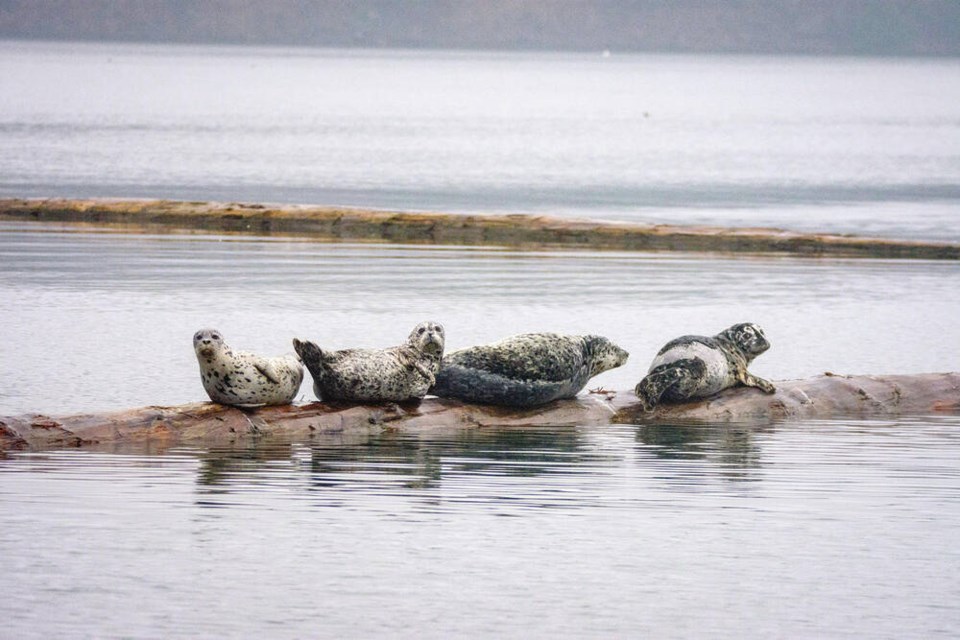A century of log booms in the Cowichan-Koksilah estuary have not only degraded critical salmon-bearing habitat, they’ve given harbour seals an unfair advantage over fish coming in and out of the river system.
And combined with low river flows caused by drought, it’s contributing to declining salmon populations in the beleaguered estuary, says a new study.
The Year Six Report by the Cowichan Tribes, Pacific Salmon Foundation and B.C. Conservation Foundation says the log booms are altering predator-prey dynamics, as seals waiting on the logs can see and eat more salmon.
Drought years are only making it worse, since the lack of water means salmon stay longer in the lower river and estuary as they wait for the opportune time to go upstream to spawn.
The report is part of a joint eight-year study to pressure government and industry for changes to support the survival and recovery of chinook salmon and estuary ecosystems.
The report suggests moving existing log booms to deeper waters and expanding water log storage in areas with less-critical salmon habitat. It says the logging industry should use dryland sorting facilities.
More than 100 years of log-boom operations in the Cowichan-Koksilah Estuary have littered the sea bed with dead zones of cut logs, bark and sticks, causing widespread damage to salmon-dependent eel grass beds and forage fish populations.
Cowichan Tribes Chief Cindy Daniels (Sulsulxumaat) urged government and industry to work with partners to reverse the impacts “before it’s too late.”
“Stseelhtun [salmon] are an integral part of our spiritual and cultural identity and they have been hit hard by the loss of marsh habitat, climate change, logging and log boom operations in our territory,” said Daniels.
“This study has delivered concrete data demonstrating the level of crisis our relatives, the salmon, are experiencing.”
Jamieson Atkinson, program manager of aquatic research and restoration at the B.C. Conservation Foundation, said Indigenous knowledge and western science both indicate the log-booming operations in the Cowichan-Koksilah Estuary are “degrading the estuarine environment physically, chemically, biologically and ecologically.”
He said increasing drought periods have made the situation “urgent” to ensure the survival and recovery of wild Pacific salmon stocks.
At their peak, log-boom operations in the Cowichan estuary covered about half the area. The current licence for log storage now covers just 5.9% of the estuary, but the report still calls for changes in industrial practices and legislation in order to restore a healthy ecosystem and mitigate the effects of long-term booming operations.
Since 2017, researchers from Cowichan Tribes, B.C. Conservation Foundation and University of Victoria have been tagging adult chinook salmon with transponders to monitor survival and return rates. Monitoring took place throughout the Cowichan River, estuary and bay.
In 2019, 2020 and 2022, a subset of chinook was also tagged with acoustic devices to track their location, depth and acceleration.
The data showed researchers chinook behaviours in the bay and lower river environments in relation to human-caused disturbances such as log booms and underwater boat noise — including daytime and nighttime behaviours, staging depths, and potential predation events.
Researchers found log booms in the Cowichan estuary reduced chinook survival. Salmon survival during the study period was highly variable, the study says, ranging from 65% in 2021 to 24% in 2023.
>>> To comment on this article, write a letter to the editor: [email protected]



